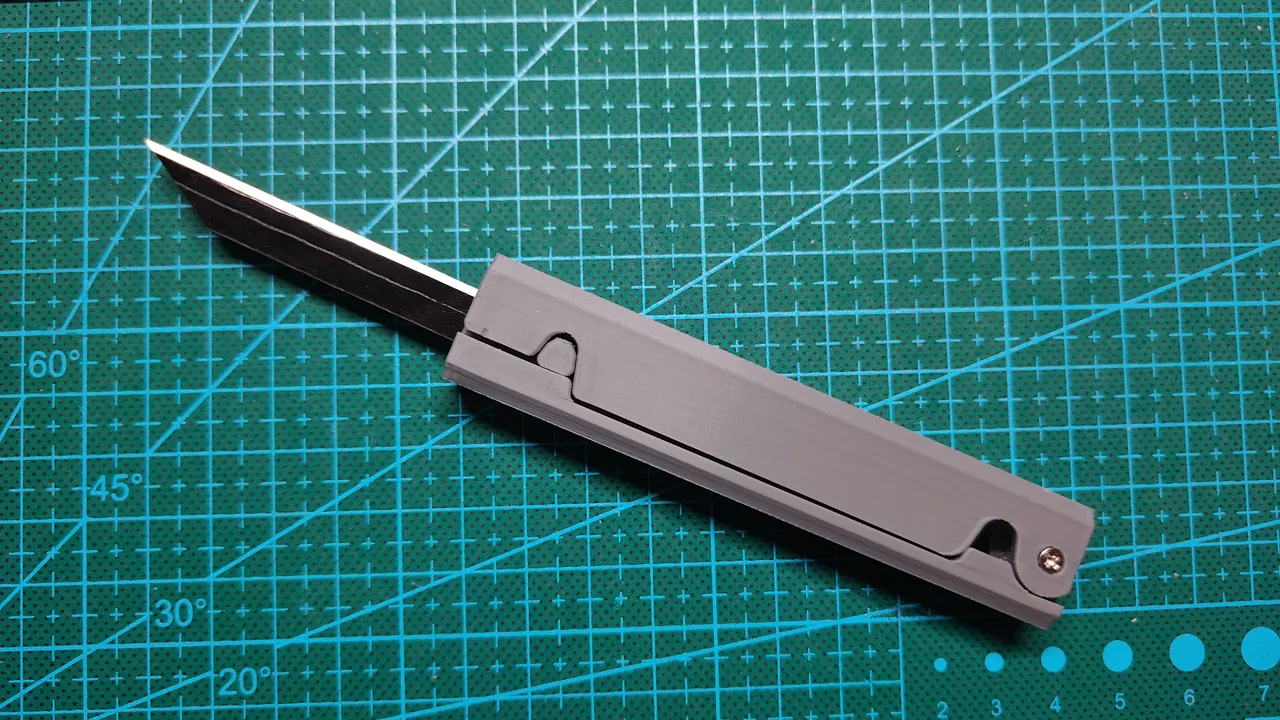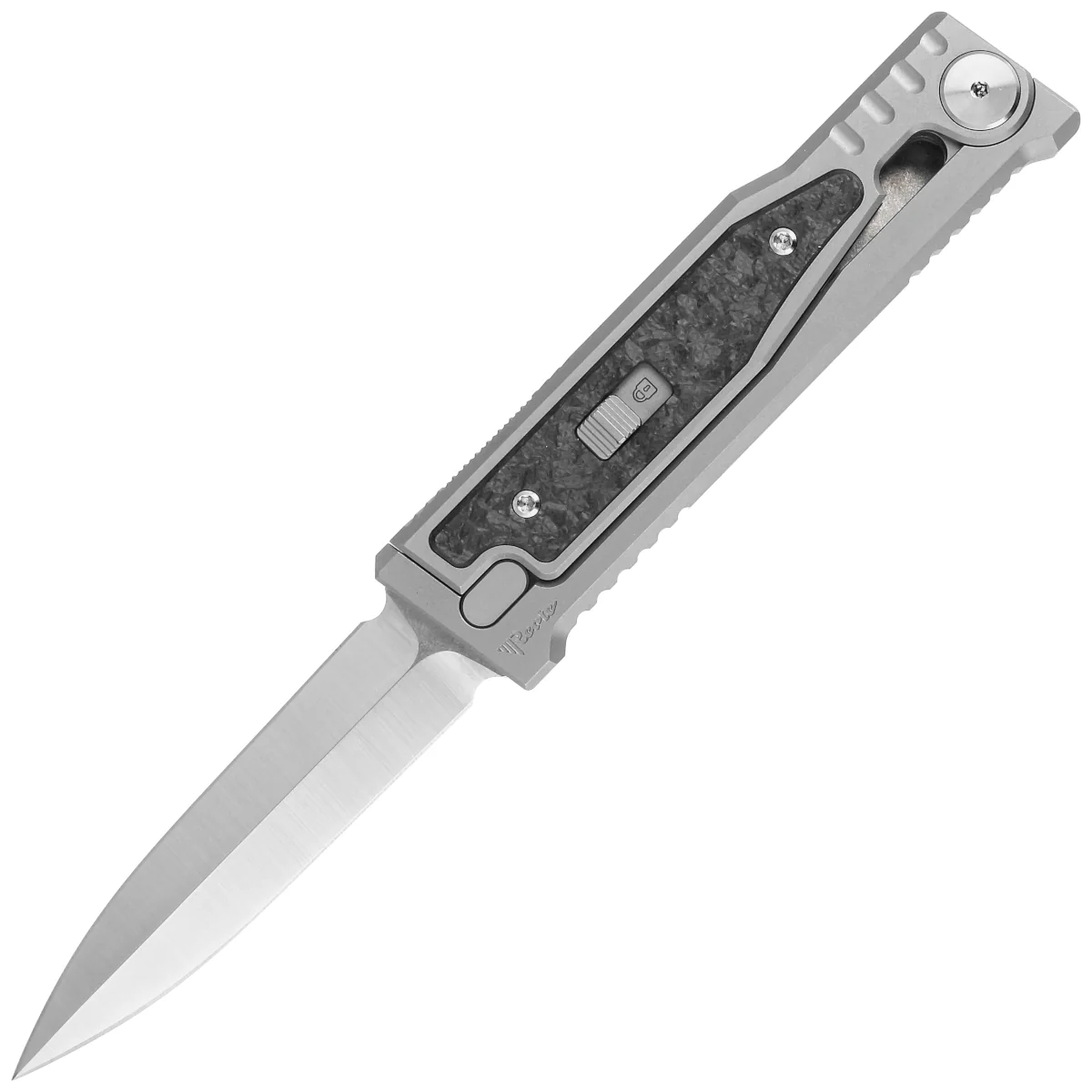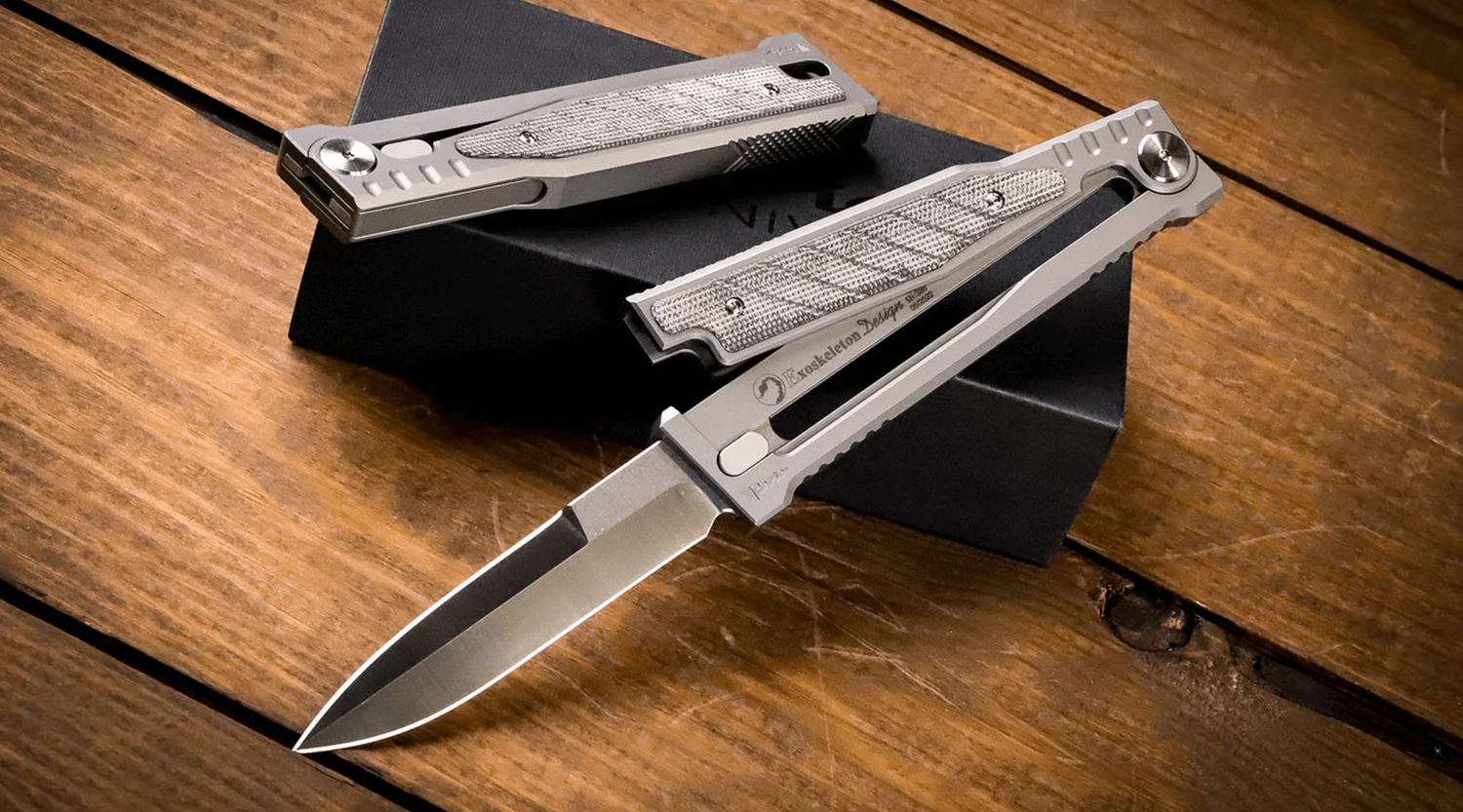Gravity knives, a term that encompasses a range of blade-opening mechanisms relying on gravity or inertia to deploy, have long fascinated knife enthusiasts, collectors, and law enforcement alike. Their unique opening mechanism, historical significance, and practical applications make them a topic of interest and debate. This article aims to explore the multifaceted world of gravity knives, delving into their use, legal status across various jurisdictions, and their place within the collector’s market.
Practical Use and Functional Design
A Tool for Professionals and Enthusiasts
Originally designed for paratroopers during World War II to allow for one-handed operation, gravity knives have evolved into tools admired for their practicality and ease of use. Modern adaptations serve a variety of purposes, from everyday tasks to specific professional applications like rescue jobs where one-handed knife deployment is crucial. Their design simplicity, with fewer moving parts than traditional folding knives, often translates to robustness and reliability, attributes highly valued in environments where functionality can be a matter of survival.
Innovative Mechanisms and Materials
Continuous innovation in materials and mechanics has kept gravity knives relevant in an ever-changing market. Advances in blade steel technology and handle materials have improved their durability, while designers and manufacturers experiment with the deployment mechanism to enhance user safety and efficiency. This marriage of old-school functionality with modern tech appeals to a broad spectrum of users, from outdoor adventurers to tactical operations professionals, ensuring gravity knives remain a staple in the toolkit of many.

Legal Landscape and Regulations
A Patchwork of Laws
The legal status of gravity knives is complex and varies significantly across different countries and even within states or provinces in the same country. In some regions, gravity knives are classified alongside switchblades and are subject to strict regulations or outright bans due to their quick-deployment feature. Owners and potential buyers must navigate a legal patchwork, where possessing, carrying, or selling a gravity knife could be legal in one jurisdiction but a felony offense in another. This inconsistency poses challenges for uniformed enforcement and understanding among the general public.
Recent Reforms and Changing Perceptions
Amidst growing recognition of the practical applications of gravity knives and advocacy by knife rights groups, some jurisdictions have begun to reassess and reform laws that blanket-ban these tools. Notably, legislative changes aim to differentiate between responsible use and possession for legitimate purposes versus intent to use as a weapon. Such reforms reflect a changing perception of gravity knives, from dangerous weapons to valuable tools, highlighting the importance of context in regulation.

Collectibility and Community
A Niche for Collectors
Gravity knives occupy a unique niche in the knife collecting community, prized for their historical significance, mechanical ingenuity, and aesthetic appeal. Vintage models, especially those with military provenance, are highly sought after and can fetch impressive prices on the collector’s market. However, it’s not just antiques that draw attention; limited edition and custom-designed modern gravity knives are also desirable for their craftsmanship, materials, and innovative features.
Sharing Knowledge and Passion
The gravity knife enthusiasts’ community is a vibrant and welcoming space for sharing knowledge, experiences, and passion for these unique tools. Online forums, social media groups, and knife shows serve as platforms for collectors to showcase their collections, exchange information about the legality and technical aspects of gravity knives, and trade or sell pieces. This communal aspect enriches the hobby, making collecting gravity knives not just about the objects themselves but also about the connections and friendships formed along the way.

Understanding and Compliance
Navigating the challenges posed by the varied legal landscape requires enthusiasts and potential owners to educate themselves thoroughly on the laws applying to their locale. Compliance is crucial to enjoying the collection and use of gravity knives without legal complications. Engaging with the knife community, consulting legal experts, and staying updated on legislative changes are proactive steps one can take to ensure responsible ownership and enjoyment of these tools.
Appreciating the Craft
Beyond their practical use and legal considerations, gravity knives are a testament to human ingenuity and craftsmanship. Appreciating these knives goes beyond their material value; it’s about acknowledging the skill, history, and innovation they represent. Collectors and users alike share a deep respect for the makers who continue to push the boundaries of design and functionality, ensuring that gravity knives remain not just tools or collectibles but cherished pieces of art.

Ensuring Responsible Use and Ownership
The Importance of Education in Knife Handling
For users of gravity knives, proper education and training in knife handling is essential to avoid accidents and ensure safe usage. Organizations and knife aficionados often run workshops or provide online resources that offer guidance on proper maintenance, handling, and deployment techniques. Users should take advantage of these educational opportunities to become adept at using their knives responsibly, whether for professional purposes or as part of a collection.
Compliance with Local Knife Laws
Responsible ownership also requires a clear understanding of the local knife laws. Owners should actively seek out information regarding the possession, carrying, and use of gravity knives to stay within legal boundaries. This due diligence protects the user from unintentional infringements and promotes a culture of responsibility that benefits the entire knife-owning community. Legal attitudes and regulations concerning gravity knives continue to shift, so staying informed is crucial for any enthusiast or professional.

The Gravity Knives Market and Innovation
Trends and Demand in Knife Making
The market for gravity knives mirrors trends in broader knife manufacturing, reflecting demand for innovative designs, superior materials, and custom elements that appeal to discerning buyers. Knife makers respond to this demand by crafting unique gravity knives that offer both aesthetic beauty and functional superiority. Advanced alloys for blades, exotic materials for handles, and precision engineering in mechanisms typify the high-end segment of this market, while more affordable but still high-quality options cater to everyday users.
The Future of Gravity Knives
The path forward for gravity knives will likely involve continuous innovation, with makers pushing the envelope of what’s possible in terms of design and function. At the same time, the knife-making community might also play a role in shaping future regulations by participating in dialogues with policymakers and advocating for laws that recognize the legitimate uses of gravity knives. Their efforts could help demystify these tools and promote a more informed perspective on their role in society.
In conclusion, gravity knives stand as a fascinating subject within the wider world of knives, cutting across practical utility, legal controversies, and collectibility. Their enduring appeal, driven by both form and function, continues to captivate a diverse audience. As laws evolve and the community grows, gravity knives will undoubtedly remain a significant topic of discussion and interest for years to come, symbolizing the delicate balance between innovation, tradition, and regulation.


